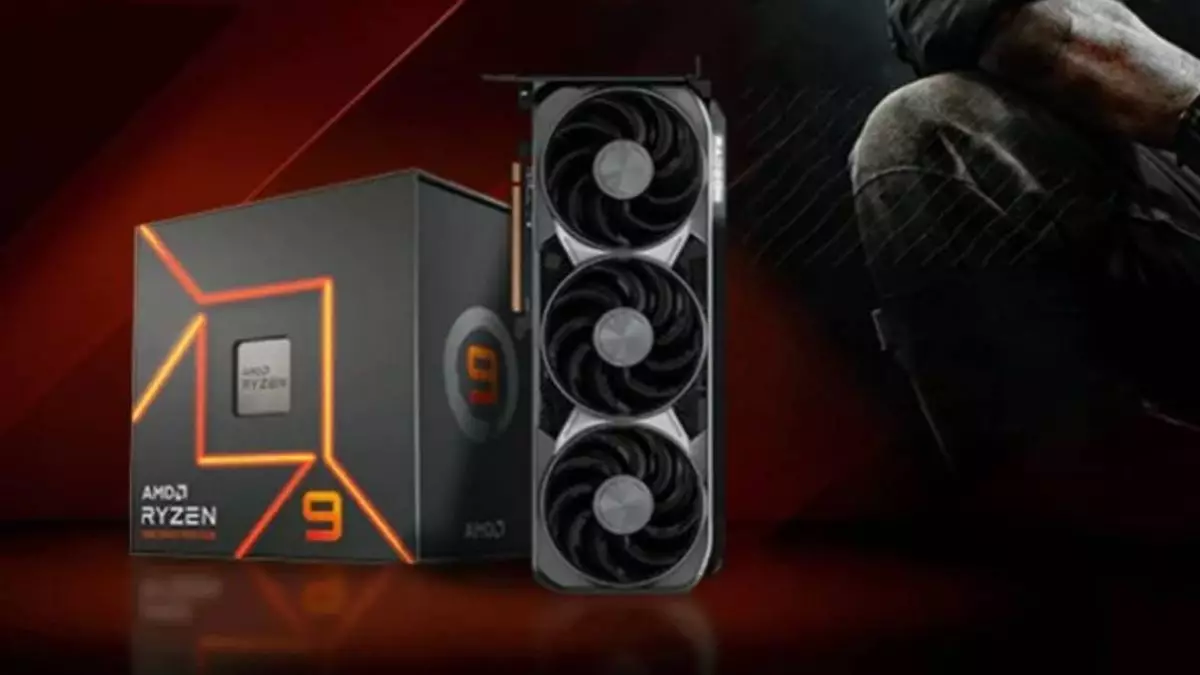As the technology industry gears up for one of the year’s most anticipated events, CES 2025, tech enthusiasts are buzzing with excitement over potential releases from graphics card titans Nvidia and AMD. With the spotlight firmly on AMD, speculation regarding their next-generation GPUs has ramped up significantly, particularly concerning the series nomenclature and expected performance capabilities.
Many years have seen AMD follow a standard numerical naming convention for their graphics cards, but emerging leaks suggest a bold departure from this traditional framework. Coined details propose a shift to the RX 9000-series title for AMD’s upcoming GPUs, casting aside expectations of an RX 8000-series release. This unexpected change has prompted ongoing discussions within the community about its significance and the rationale behind it. Traditionally, AMD has relied on a straightforward numeral sequence—RX 5000, RX 6000, RX 7000—with the second digit serving as a primary differentiator. The decision to skip a digit may indicate a strategic approach to align their GPU product line with their newly released Zen 5 CPUs, which also bear the 9000-series title.
While some critics see this as a marketing gimmick, others suggest it offers an opportunity for consumers to make sense of AMD’s product lineup without requiring an in-depth decoder. This pursuit for clarity is essential as the GPU market becomes increasingly complex, with both Nvidia and AMD presenting overlapping features and capabilities across their various models.
Recent leaks, primarily sourced from online platforms like X and Reddit, seem to confirm the existence of GPUs named RX 9070 and RX 9070 XT, reportedly outperforming AMD’s current flagship, the RX 7900 XTX. Visuals shared in online forums, including one seemingly promoting these GPUs, reveal a new design language with a striking black and silver aesthetic. This design aligns with modern trends in GPU aesthetics, veering away from the older models while still channeling the identity of AMD’s offerings.
While some skepticism surrounds the reliability of these leaks, they echo previous patterns where early leaks have led to accurate product releases. Moreover, a potential performance leap is at the forefront of discussions. Reports are circulating that the RX 9070 XT could achieve ray tracing performance up to 45% better than its predecessor, while also delivering rasterization performance on par with current high-end contenders like the Nvidia RTX 4080. Should these performance metrics hold true, the RX 9070 XT could prove a formidable option for gamers and creatives alike.
Despite the promising potential of the RX 9070 XT, it is crucial to recognize AMD’s stated intentions regarding market positioning. AMD’s Jack Huyhn has publicly declared that the new lineup won’t be vying for supremacy in the high-end segment occupied by Nvidia, leaving room for the latter to maintain a stronghold in that particular niche. Instead, AMD appears to focus on providing competitive and value-oriented options across other segments, leaving the high-performance crown largely untouched.
This strategy could signal a pivot, emphasizing accessibility and affordability without compromising quality. If the RX 9070 XT indeed offers significant performance enhancements at a competitive price point, it may become an attractive option for gamers and professionals who aim to balance performance with budget considerations. Furthermore, with AMD’s FidelityFX Super Resolution (FSR) 4 rumored to receive AI enhancements—similar in nature to Nvidia’s Deep Learning Super Sampling (DLSS)—the playing field for high-fidelity gaming could experience a dramatic shift.
With so much predictor speculation surrounding the next-generation graphics cards, CES 2025 promises to be a pivotal moment for AMD and the technology landscape at large. Whether the RX 9000-series GPUs can meet the high expectations set by both enthusiasts and the market remains to be seen. As we gear up for this technology showcase, one thing is clear: the stakes have never been higher in the graphics card arena, and each move from AMD and Nvidia will carry significant weight in determining the future of high-performance computing. Until the event unveils the official details, excitement, speculation, and anticipation will continue to shape discussions across forums and media platforms.

